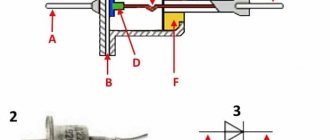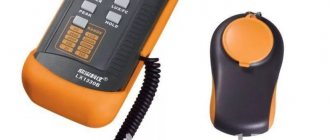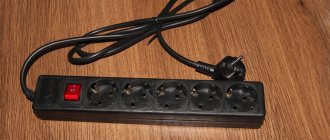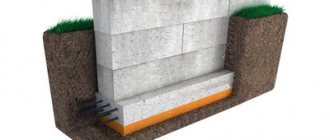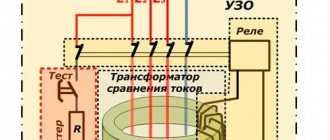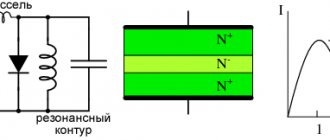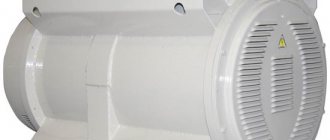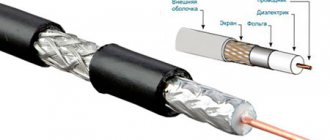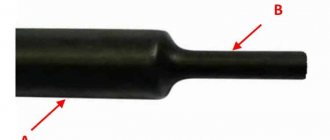When constructing buildings and performing finishing work, it often becomes necessary to prepare an aqueous solution of concrete, putty and other dry mixtures. A construction mixer is used for this. It helps to quickly obtain a homogeneous solution of cement, paint or primer mixture.
What is a construction mixer?
The device is an electric apparatus equipped with whisks for capturing and mixing components. A concrete mixer is similar in appearance and principle of operation to a kitchen appliance and differs only in its larger dimensions and increased length of the working part. The device helps reduce labor costs and time for preparing the building mixture.
Construction mixer device
The structure consists of the following parts:
- housings;
- motor;
- gearbox;
- nozzle clamping mechanism;
- steel rod with a whisk at the end;
- keys for turning on and selecting mixing speed.
A mixer for construction can be produced without a gearbox. In this case, the rotation speed of the steel nozzle with a whisk depends on the force of pressing the control button. Depending on the type and model, a construction mixer may be equipped with several attachments with different whisk shapes. Stationary devices are supplied with a special working container. To make it possible to use the same attachment for preparing several types of mixtures, the mixer is additionally equipped with a reverse system.
Construction mixer device
Any mixer is relatively simple. An electric motor is inserted into the mixer body, which is powered by a 220 V network (powerful mixers may require three-phase current). When turned on, the torque is transmitted to the nozzle, which carries out direct mixing.
On the outside of the mixer body there is a control panel with a power button, a shaft speed control, and possibly other buttons - depending on the type and model of the mixer.
Multi-speed mixers have a speed selector. In such a mixer, the torque from the electric motor shaft is transmitted to the nozzle indirectly, using a mechanical gearbox built into the housing.
Functions of a construction mixer
The tool for preparing the solution is used by professionals involved in finishing work. It helps to make aqueous solutions of the following types:
- putty based on gypsum or cement;
- adhesive for ceramic tiles, porcelain tiles, mosaics, stone;
- low or medium density concrete;
- bitumen mastic;
- sand-cement plaster;
- paints and varnishes.
A construction mixer for dry mixtures is indispensable when you need to quickly prepare a solution in a large volume. Mixing by hand does not provide a uniform consistency, takes a long time and requires considerable effort. Using a construction mixer, you can speed up the work and easily obtain the desired degree of dilution of the dry mixture.
Torque
The most important factor, but only for those cases if you plan to stir highly viscous solutions and dry mixtures - the most common case. Manufacturers do not always indicate this parameter.
If the parameter is not specified, then it is better to refrain from choosing such a mixer. Mixers in the inexpensive category usually have a torque of 10-30 Nm, while more expensive ones – up to 100 Nm, and professional models – over 100 Nm. For home and country work, in any case, there is no point in purchasing a mixer with a torque of more than 50-70 Nm.
Characteristics of a construction mixer
The main parameters by which devices differ from each other are:
- Power
. Since the main component of a construction mixer is the motor, the operation of the device largely depends on its performance. Manual models for domestic use have a power of up to 1 kW, professional models - over 1 kW. - Weight
. This parameter depends on the mixer design and engine power. Hand-held devices weigh from 2 to 3 kg. Stationary models can weigh 10 kg or more. - Torque
. This parameter shows the amount of force that is applied to the mixture. The higher the torque value, the greater the viscosity of the solution with which the mixer is capable of working. Household appliances have an indicator of 10-20 Nm, and professional ones - up to 100 Nm. - Number of revolutions
. The higher the power of the device, the higher the speed of rotation of the whisk. The solution mixer has several operating modes, which differ in the number of revolutions per minute. Values up to 500 rpm are used to create viscous and heavy mixtures. Indicators of 750-850 rpm are required for liquid substances.
Main characteristics of construction mixers
Power.
Household and semi-professional mixers are designed to work with a single-phase 220 V network. Their power rarely exceeds 2 - 2.2 kW. It turns out that the maximum current when the mixer is operating will be about (2000+2200)/2/220 = 9.5 A approximately. This is enough for most work around the house and garden.
If the work is planned to be carried out at home, then you need to make sure in advance that the wires in the apartment are designed for such a current load. Otherwise, the wires will heat up and melt.
If the apartment has aluminum wires, then you can connect the mixer directly to the access panel via an electrical extension cord. The cross-sectional area of the wire of such an electrical extension cord should not be less than 2.5 square meters. mm. If this option seems complicated and expensive, then you can opt for models with a power of up to 500 W. There are plenty of such models.
Speed.
This parameter is important only for those jobs that require whipping the solution. In this case, speeds of the order of 3000-5000 rpm may be required - it all depends on the specifics of the mixed medium and the requirements for the quality of the final result.
For most other work, low and medium speeds up to 1000 rpm are quite sufficient. Almost all modern mixers have these characteristics.
Torque.
This parameter is important if you intend to work with medium and highly viscous media, especially if there are increased requirements for the number of shaft revolutions during mixing. For most jobs, a torque of approximately 5 Nm is suitable.
Nozzles
The nozzles directly mix the solution, so their characteristics should be considered in more detail. The attachments are attached to the mixer using a chuck located at the end of the output shaft of the electric motor or gearbox.
Often, the mixer comes with several different attachments designed for mixing solutions of different viscosities under different working conditions. The operating conditions and the maximum viscosity allowed for a particular nozzle are always indicated in the user manual.
Types of construction mixers
The main difference is the design of the device. All mixers can be divided into groups:
- Manual
. Such devices are used when it is necessary to prepare a mixture in a small volume. A hand-held construction mixer is indispensable when carrying out DIY repairs in an apartment or country house. It has small dimensions and light weight. The device is equipped with two handles that help hold the device in the desired position. - Stationary
. The design helps maintain the desired viscosity of the solution for a long time, which is convenient when the mixture is consumed slowly. The mixer has impressive dimensions, so it is used only by professionals in case of a large volume of work. - With battery
. The devices are not very productive and are used in situations where there is no access to a source of electricity. A cordless construction mixer will help you mix a small volume of medium-viscosity solution.
Mechanical construction mixer
The device is used in cases where it is necessary to mix a small amount of dry cement, plaster or gypsum with water. The hand-held construction mixer is small in size and is used for minor home repairs. The device is also convenient for carrying out finishing work at the dacha or in a country house. The mixer helps speed up the process of obtaining the finished mixture and achieve uniformity of the composition.
Electric construction mixer
Compared to mechanical equipment, this type of equipment has high productivity and is capable of mixing large volumes of compositions. The construction hand-held electric mixer can be single-screw or twin-screw. The second type is distinguished by a high number of revolutions per minute and the ability to rotate the nozzle in two directions. Electric models can be equipped with an asynchronous motor. Mechanical parts in such mixers are replaced with electronic control units, which ensures low noise levels.
Types of construction mixers: which tool is better?
A construction mixer is a necessary tool for mixing mortars, paints, adhesives and other materials. Before choosing one, it is useful to understand the features of a highly specialized tool. Traditionally, mixers are classified according to engine power:
- Over 1000 Watt – suitable for mixing crushed stone, gravel, sand and slag, performing any heavy work with a large volume of materials;
- Less than 1000 Watt - suitable for varnishes, paints, building mixtures, recommended when finishing an apartment for domestic purposes.
Almost all mixer models are equipped with one spindle - an attachment for mixing the solution. Nowadays, modern devices are increasingly used - with two spindles, which allow increasing the volume of mixed concrete.
Fig 2.
Types of construction mixers
How to choose a construction mixer?
Before purchasing, you need to find out how often and under what conditions the device will be used. To make the right choice and understand which construction mixer is better, you must follow the rules:
- For home use in case of one-time repairs, it is worth buying a manual device with low productivity. This will give you the opportunity to save money and not overpay for excess mixer power. To repair a house or country house, you do not need to mix the solution in large quantities, so even a budget device can easily cope with its tasks.
- If you need to work with light and liquid substances, you should opt for a two-spindle design. Two nozzles rotating in different directions prevent the solution from splashing in different directions.
- Professional builders should pay attention to high-quality, high-performance models. To avoid having to hold the mixer in your hands all the time, you can choose a stationary unit.
Construction mixer attachments
The main working part of the device is a metal pin, which is attached to the body using a cartridge. At one end there is a whisk for a construction mixer, which comes in several types:
- Propeller
. Used for mixing liquid compositions - varnishes, acrylic primers and water-based paints. - Crosspiece
. A whisk for a solution of this shape is necessary to create heavy and viscous mixtures. It ensures horizontal mixing and prevents air from penetrating into the deep layers of the composition. - Spiral
. These nozzles are divided into two types: left-handed and right-handed. If the mixer is equipped with a reverse rotation function, you can get by with one whisk of any type. Spiral nozzles are used for the preparation of cement, gypsum putties and low-viscosity concrete. - Double sided screw
. The guides of such a nozzle ensure mixing of the solution in two directions at once. This helps to quickly obtain a uniform consistency. A nozzle with two multidirectional screws is necessary for obtaining liquid solutions of low viscosity. - Universal
. The design combines several working parts of different shapes. It is widely used in the creation of both liquid and dense solutions. Additionally, the device can be equipped with support circles. With their help, you can place the mixer on the bottom of the container and fix it in one position without additional devices.
Popular manufacturers of construction mixers
Brands of construction tools are familiar to every person who has at least once carried out an apartment renovation with their own hands. Today there are over a dozen foreign and domestic companies on the market offering equipment in various price categories. Suitable for occasional home use:
- Zenith;
- Fiolent;
- Interskol;
- Topex;
- Sturm.
These construction mixers are characterized by low cost with optimal quality, engine power and productivity. If you have complex and extensive repairs ahead, or you plan to earn extra money in the construction industry, you can pay attention to more well-known brands - Makita, Bosch. Their price is higher, but the quality is also at the highest level.
Rating of construction mixers
Since devices vary significantly depending on the area of use, we can distinguish separate models for home and professional use:
- Fiolent MD1-11E
construction mixer is suitable as a hand-held household appliance . The device has a power of 1.1 kW and a torque of 85 Nm. This is quite enough to quickly and easily prepare a small amount of building mixture for home repairs. The mixer is equipped with a convenient bracket-shaped handle, which serves as a support when the device is placed horizontally. - If you need to frequently transport tools for work in different places, you should pay attention to the Stanley SDR1400
. It weighs only 3.5 kg, yet has a power of 1.4 kW and a torque of 80 Nm. The disadvantages include the high noise level during operation and the short length of the power cable - 2.5 m. - Battipav 050S,
is suitable as a stationary device for professional use . It comes complete with a 65L capacity and has wheels for easy transport.
Construction mixers: characteristics, types, types
- Smooth start. This function allows you to avoid a sudden start of the engine at the beginning of work, which, on the one hand, avoids overloads on the power supply network, and on the other hand, splashing of construction mixtures. — Speed regulator. The ability to adjust the rotation speed of the working tool nozzle will be very useful for working with mixtures of different consistencies. As is known, for effective mixing of liquid materials a high speed of revolutions is required, and for viscous materials a lower speed but a higher torque is required.
— Maintaining speed. Using special sensors, the speed control system monitors changes in load and, depending on this, increases or decreases the rotation speed of the nozzle, thus maintaining the user-specified speed regardless of the load. This ensures more efficient and high-quality mixing and extends the life of the device.
— Lock the power button. Locking the power button when the tool is turned off allows you to avoid accidental startup in abnormal mode, which increases the safety of operation of the device. And on the contrary: locking when the tool is turned on allows you to avoid the need to constantly keep your finger on the power button, which is very convenient, especially during long-term work.
- Reverse. The reverse function allows you to start the tool in spindle rotation mode with the attachment in the opposite direction. In practice, this makes it possible to increase the efficiency of mixing construction mixtures. Another advantage is that when using a standard nozzle with spiral paddles, this function allows you to lower the mixture to the bottom in one operating mode, and raise it to the top in another, using only one nozzle.
— Electronic engine protection…. The system ensures automatic shutdown of the engine in case of overheating, jamming of the nozzle, or simply when the load increases critically, which avoids failure of the tool and extends its service life.
— Brushless motor. The presence of a brushless (brushless) motor in an electric tool. Such motors are noticeably superior to traditional brushed motors in terms of efficiency, which makes it possible to significantly reduce energy consumption without sacrificing power; this is especially important for cordless tools (see “Power Source”), where this feature is mainly found. In addition, brushless motors make less noise and produce virtually no sparks during operation, making them ideal for work in conditions of increased fire danger. Their main disadvantages are traditional - the complexity of the design and the high price.
DIY construction mixer
If the device is needed for one-time use during home repairs, you should not spend money on purchasing equipment. You can make a mixer for building mixtures yourself from available elements. For production you will need:
- drill or hammer drill;
- hairpin at least 8 cm long;
- 4 metal plates;
- washers;
- nuts
The hairpin will be used as a nozzle. One end of it needs to be ground down to form a triangle - it will be attached to the drill. You need to drill 2 small holes on each plate. Washers and nuts are attached to the part of the stud where the thread is located. Between them are slightly curved plates. Then the homemade attachment is inserted into the drill and secured with a rotary wrench. This mixer does not allow mixing large volumes of mortar and can only be used for one-time construction work.
Deciding on the model
Mixers for building mixtures have a large number of goals and objectives, depending on which they are determined with the device model. If you need to mix a large number of different mixtures, you should choose a model with more power.
A similar model of construction tool is selected if a solution containing a mass with fillers or having a mass of a high degree of viscosity is mixed.
How to use a construction mixer?
The device must be used only for its intended purpose. Do not allow the parts to overheat, as this will cause the mixer to quickly fail. During operation, the following rules must be observed:
- Before starting work, make sure the tool is in working order.
- If the concrete mixer is equipped with a gearbox, check the oil level regularly.
- Make sure that the device is not used at maximum speed for a long time.
- After finishing work or in case of a long break, you need to clean the nozzle from the mortar.
- The mixer should be stored in a dry place with good ventilation.
The most worn parts are the control buttons, chuck and commutator brushes. With constant use, it is necessary to monitor their condition and change them periodically. Since a construction mixer is a complex and expensive device, it is better to carry out maintenance and replacement of components at a service center.
Construction mixers
Construction mixers come in stationary and manual versions. Stationary mixers are attached directly to the container in which mixing occurs. Hand mixers are held suspended by the person himself during work. This leads to the main disadvantage of hand mixers relative to stationary ones: it is very difficult to hold a hand mixer while working for a long time, especially if it is quite heavy.
On the other hand, a hand mixer is capable of working with any container. In addition, by properly controlling a hand mixer, you can stir the mixture very evenly by directing the mixer attachment at different angles and to different depths.
Mixers come with attachments. The nozzles have different diameters and lengths. As a rule, attachments for construction mixers are of the ribbon type. The propeller type of attachments is rare. This is due to the fact that initially the nozzles are designed for mixing viscous and especially viscous media.
Often, mixers come with several attachments for the most effective stirring of a particular mixture of substances. Sometimes an ordinary drill or hammer drill with the function of working as a drill is used under the mixer, into the chuck of which such a mixing attachment is inserted (the so-called drill mixer).

